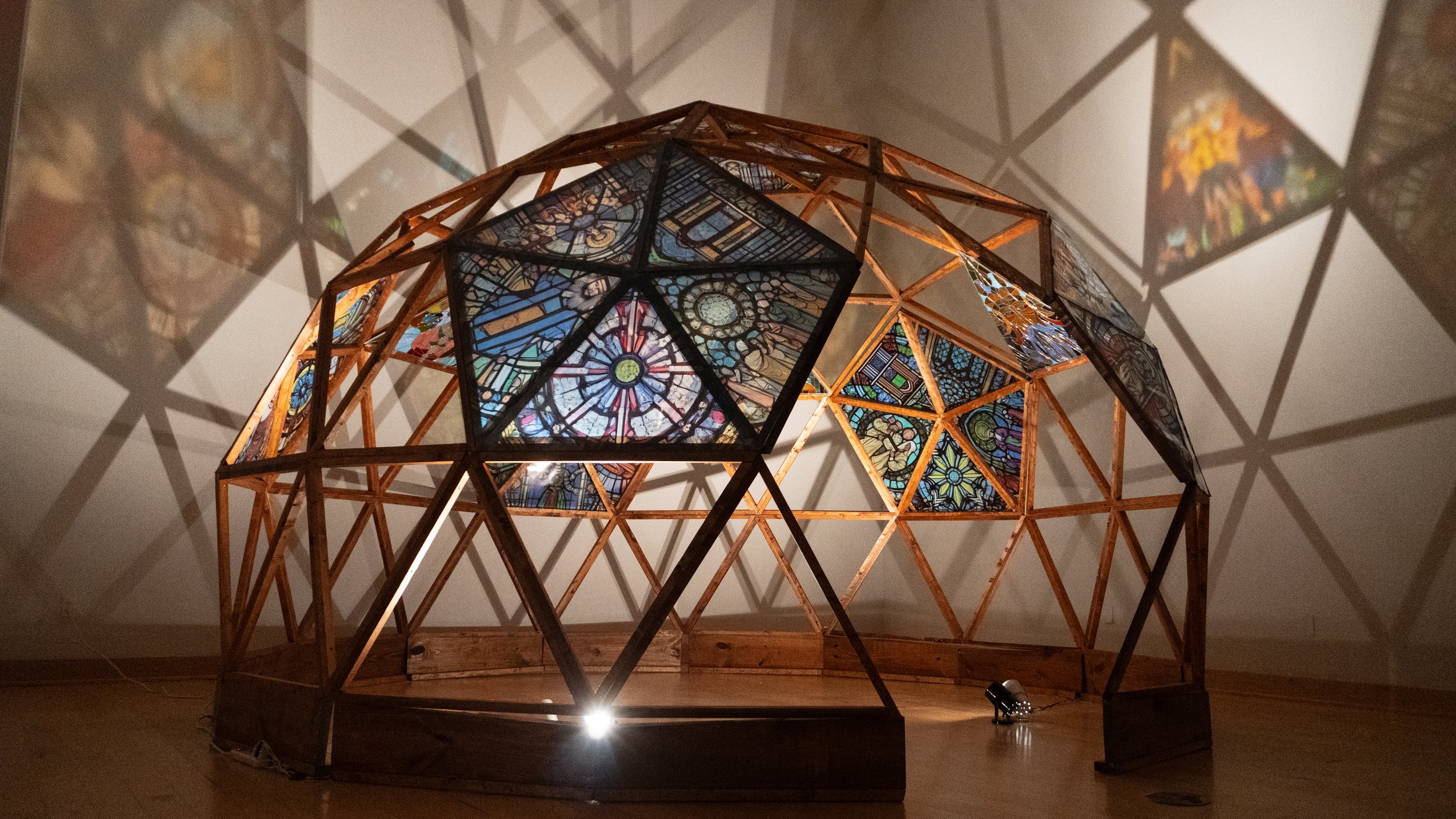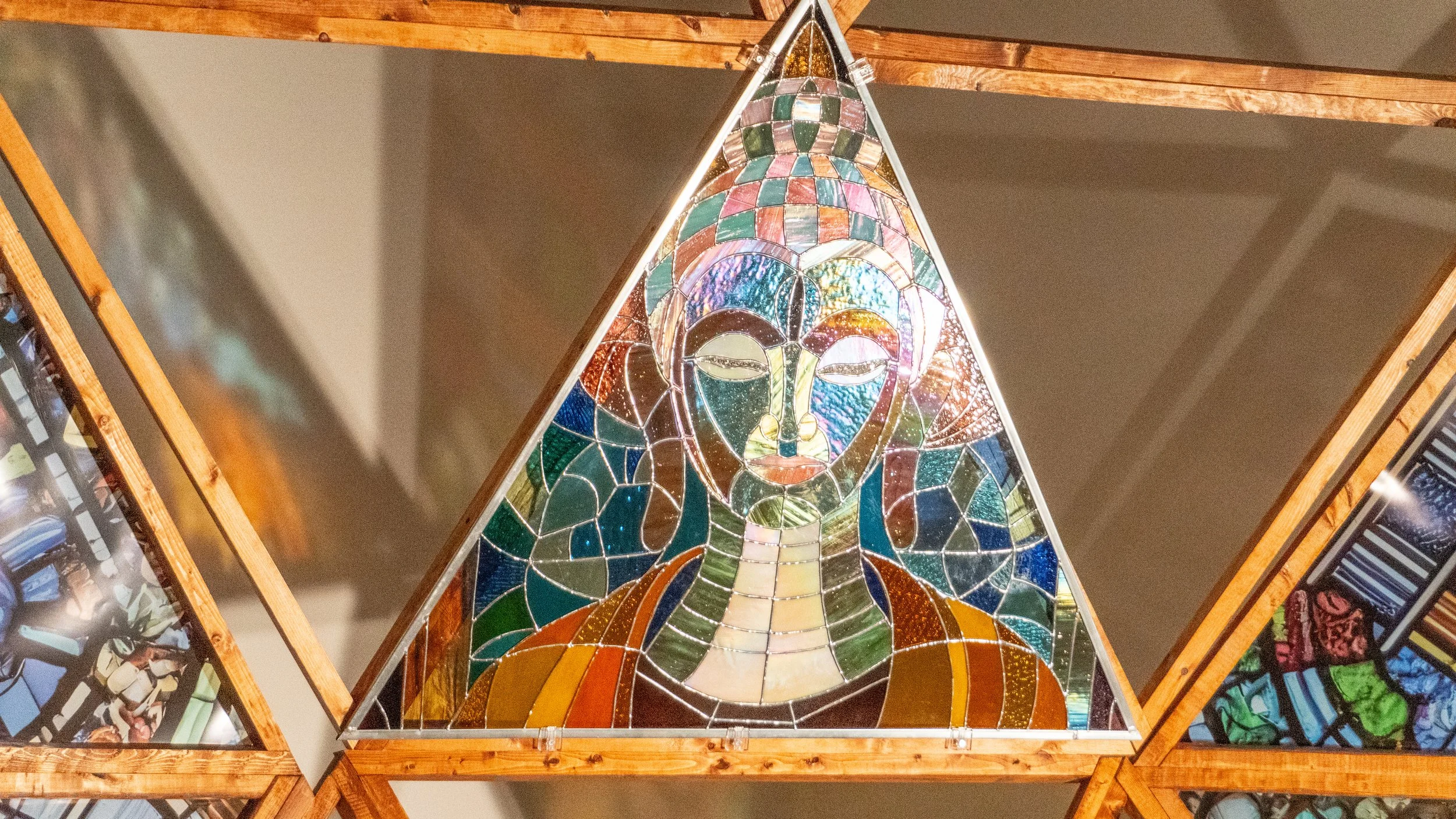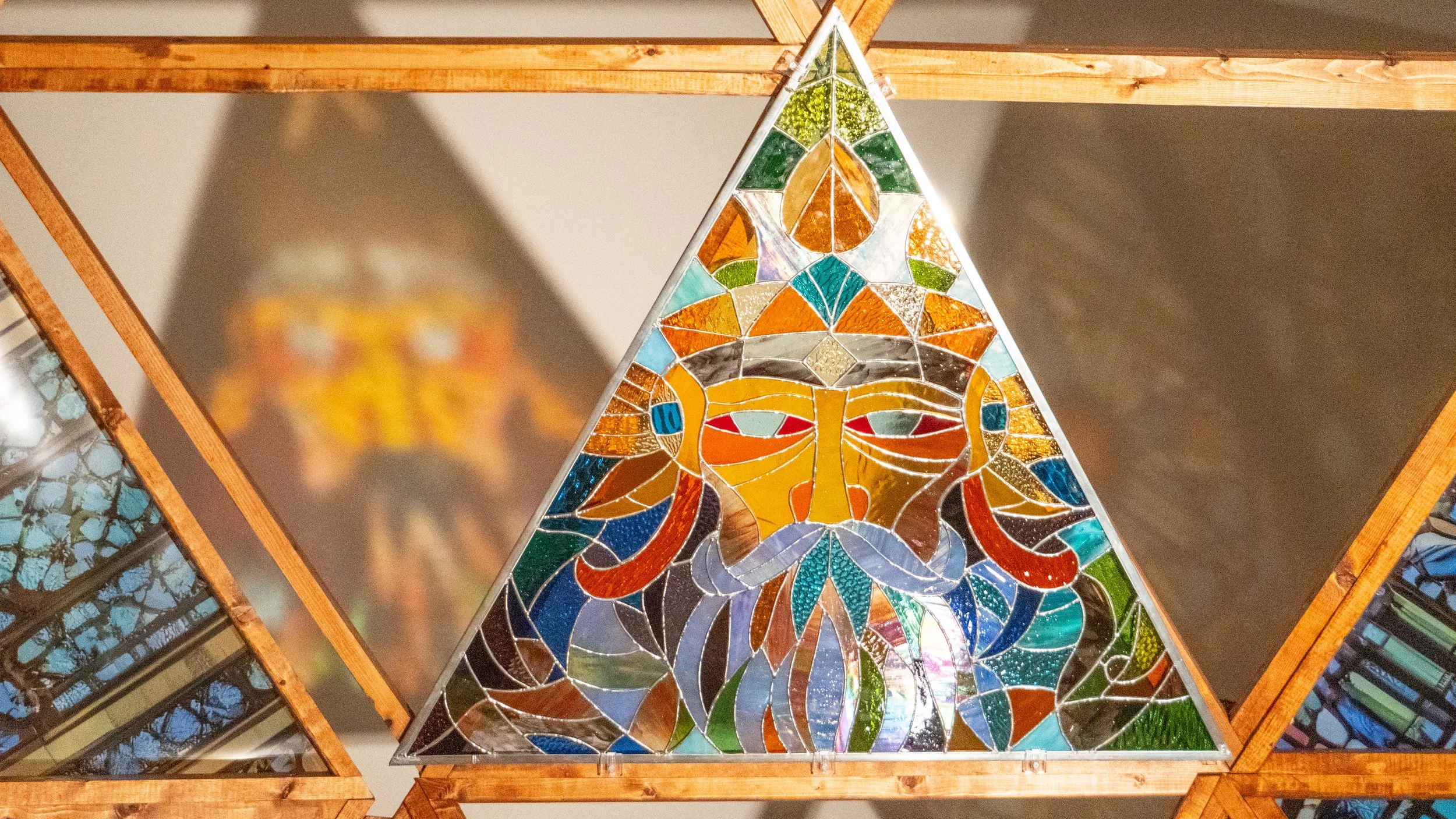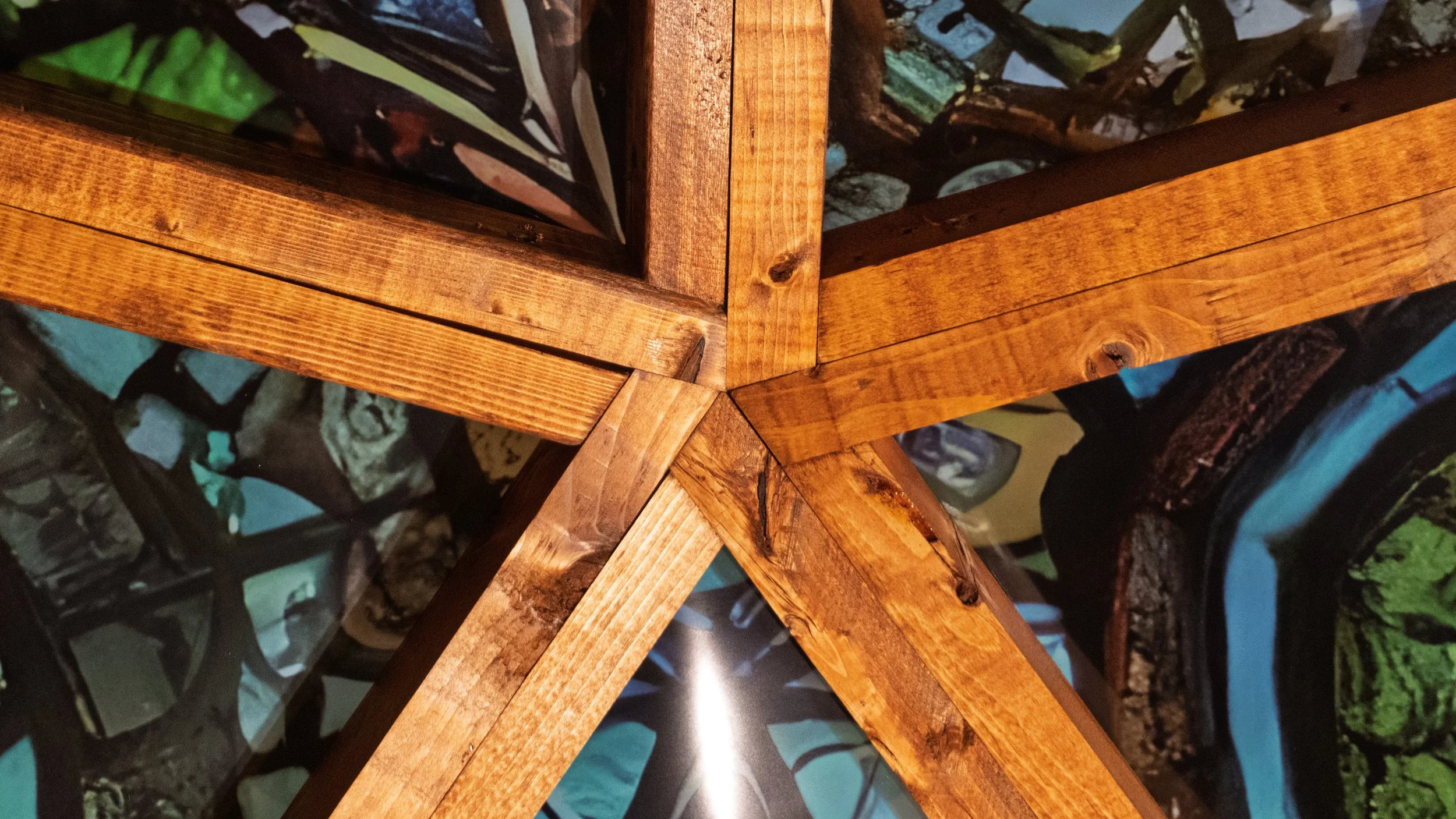Pantheon, 2025
Dimensions: 15 x 10 ft
Medium: Wood, Inkjet prints on transparency film, stained glass, AI images
In Pantheon, a utopian geodesic dome houses AI-generated stained glass images printed on transparent film alongside AI images translated into real stained glass through my interpretation of them. I intentionally generate images that reveal glitches in the algorithms to reflect on the effects of transfer and translation. These glitches are readily visible to the viewer. However, the AI image I use as a reference translates into a finished, pristine stained-glass work. This duality in the process and its outcome represents a search for truth, understanding and meaning.
The light projected onto these surfaces appears similar, despite a drastic difference in their materiality. The resulting projections create a visual simulacrum of two very distinct forms in space. The projections on the walls create a new form of the object, a simulacrum of itself. The work led to many discoveries, opening my mind to previously unknown and intangible elements. I continually reflect on the role of iteration and evolution in my work through a process of experimentation and discovery. The body is physically engaged with the structure as one performs in the space. Through this interaction, I question the real-life impacts of the algorithm in the same way religion or other systems have functioned thus far. I am interested in how we navigate these unknown, uncertain spaces, the outcomes we envision and the meanings we make of them.
I draw inspiration from the Pantheon in Rome and its history of conversion from a temple used for speeches and other government functions to a Christian place of worship. Religious sites often experience periods of creation, destruction, conversion and reconstruction. Through this work, I draw upon the history of a specific site and the ideology of a geodesic dome to question transient sites of sacredness alongside spaces that endure time. I reflect on the sacred qualities of stained glass as it extends into space restricted by the walls of the gallery, metaphorically mirroring ideological echo chambers through the physical containment of light.
The body is physically engaged with the structure as one performs in the space.
Through this interaction, I question the real-life impacts of the algorithm in the same way
religion or other systems have functioned thus far. Our senses are activated with
repetitive geometry, iridescent and translucent surfaces, contrasting hues, projections in
space and a spherical presence. With this activation, I question how our senses form our
understanding of reality through performativity in space. How do our senses navigate
conversations with entities that lie beyond ourselves? With the ambiguity between being
and becoming?











